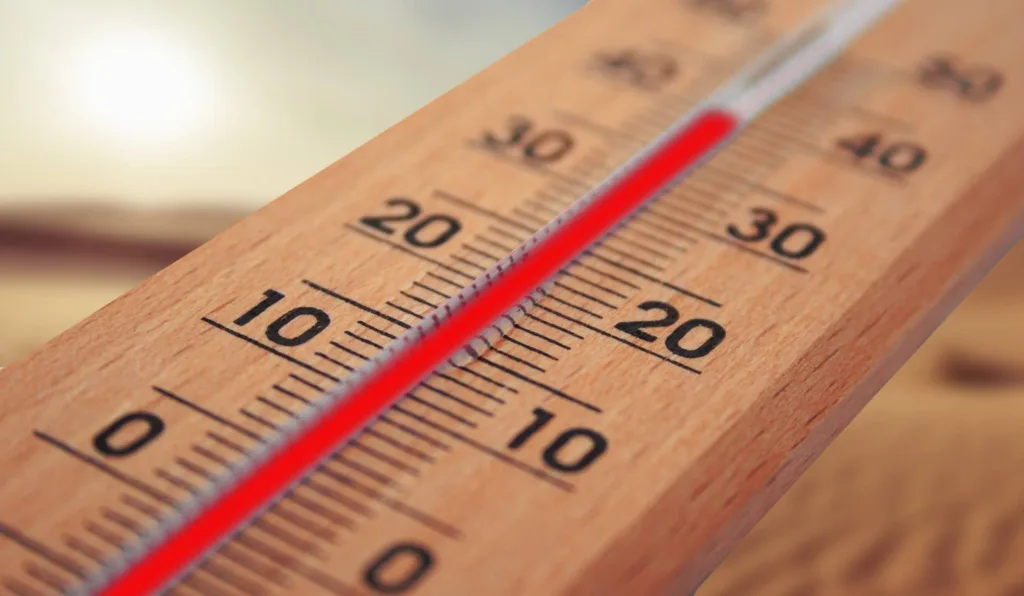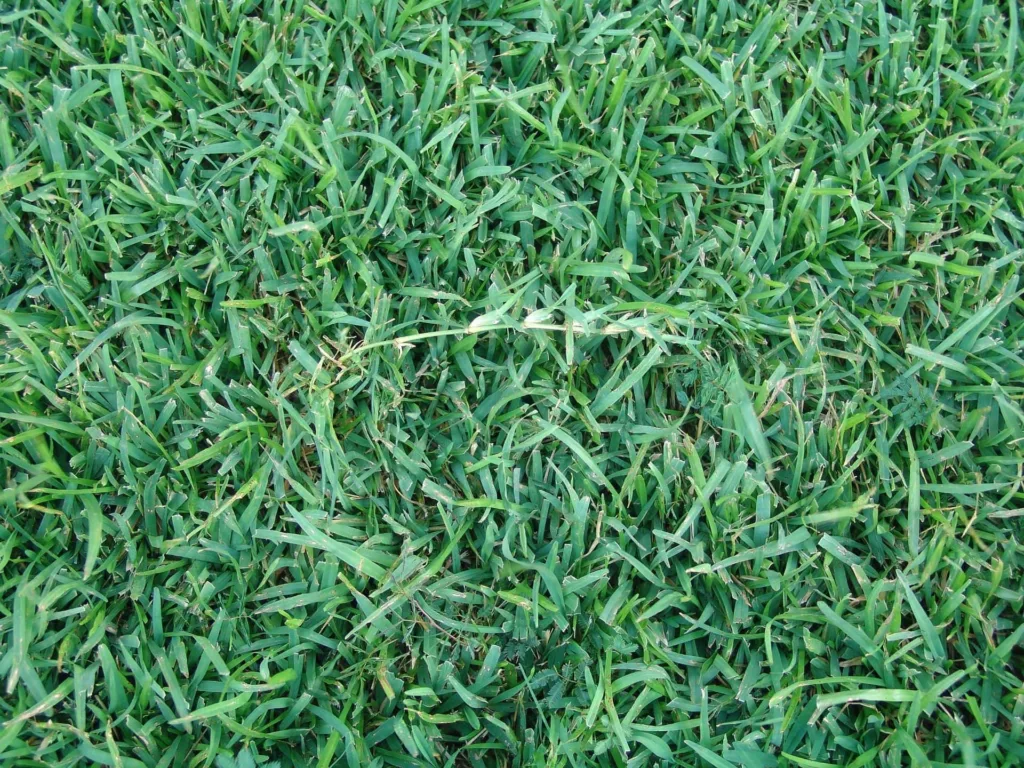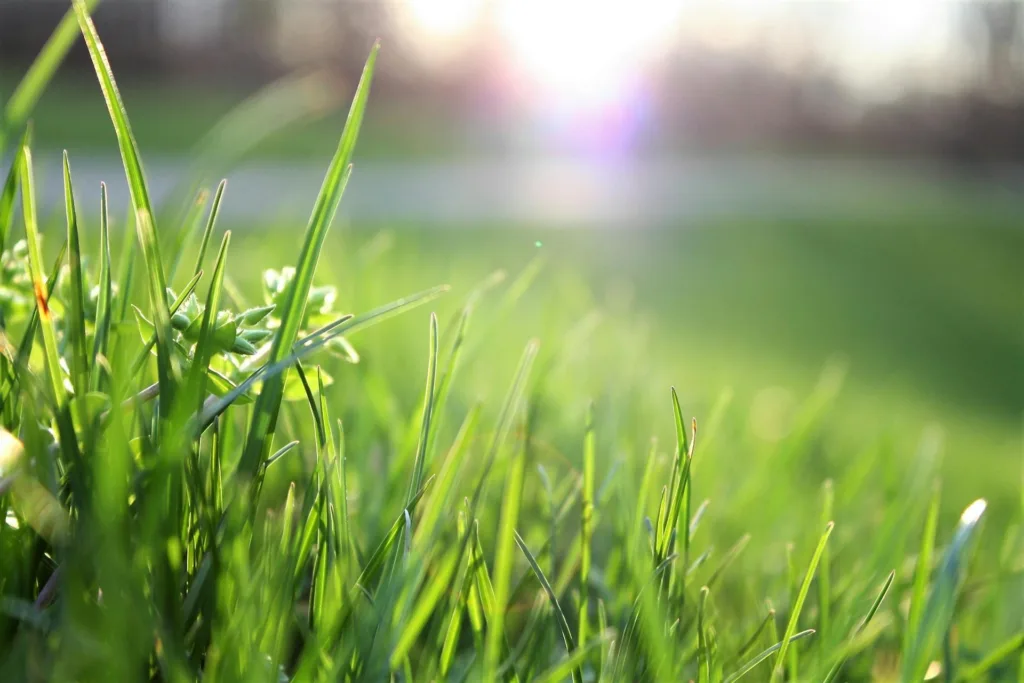Are you dreaming of a lush, resilient lawn that thrives in the scorching summer heat? Look no further than warm-season grasses. These heat-loving grass types are nature’s answer to maintaining a beautiful lawn in regions where temperatures soar and rainfall can be sparse. In this comprehensive guide, we’ll dive deep into the world of warm-season grasses, exploring their unique characteristics, popular varieties, and how to cultivate and maintain a lawn that’s the envy of your neighborhood.
What Are Warm-Season Grasses and Why Choose Them?
Warm-season grasses are turf varieties that have evolved to flourish in climates with hot summers and mild winters. Unlike their cool-season counterparts, these grasses hit their stride when temperatures climb above 80°F (27°C). They’re the powerhouses of the grass world, using a specialized form of photosynthesis that allows them to conserve water and thrive in conditions that would leave other grasses wilting.
But why should you opt for warm-season grasses? Here’s a quick rundown:
- Heat tolerance: They stay green and lush when the mercury rises.
- Drought resistance: Many varieties can survive extended dry spells.
- Lower water requirements: Perfect for water-conscious homeowners.
- Reduced mowing frequency: Some types grow more slowly, meaning less lawn maintenance.
- Durability: Many warm-season grasses can handle heavy foot traffic.
The Science Behind Warm-Season Grasses
At the heart of warm-season grasses’ superpower is their C4 photosynthesis pathway. This unique metabolic process allows them to use water and CO2 more efficiently than cool-season grasses, which use C3 photosynthesis. Here’s a breakdown of how C4 photosynthesis gives warm-season grasses their edge:
- Water efficiency: C4 grasses can close their stomata (leaf pores) during hot days, reducing water loss.
- Heat tolerance: The C4 pathway doesn’t slow down in high temperatures like C3 does.
- Nitrogen use: C4 grasses need less nitrogen to thrive, reducing fertilizer needs.
This efficient photosynthesis leads to a distinct growth pattern. Warm-season grasses typically start greening up when soil temperatures reach about 65°F (18°C) and grow most vigorously when air temperatures are between 80-95°F (27-35°C). They’ll slow down and eventually go dormant as temperatures cool in fall, often turning brown until spring’s warmth returns.
Popular Warm-Season Grass Types

Let’s explore some of the most beloved warm-season grass varieties, each with its own unique charm and benefits:
1. Bermudagrass: The Tough, Drought-Resistant Champion
Bermudagrass is a favorite for good reason. It’s incredibly resilient, forms a dense turf, and recovers quickly from damage. Here’s what you need to know:
- Appearance: Fine-textured with a bright green color
- Growth habit: Spreads via both above-ground stolons and below-ground rhizomes
- Drought tolerance: Excellent
- Wear resistance: Very high, great for high-traffic areas
- Maintenance: Moderate to high, requires regular mowing
Pro tip: For a manicured look, mow Bermudagrass frequently at a low height (0.5-1.5 inches).
2. Zoysia: Low-Maintenance Beauty for Sun and Shade
Zoysia grass offers a perfect balance of beauty and practicality. It forms a lush, carpet-like lawn that can handle some shade:
- Appearance: Medium to fine texture with a deep green color
- Growth habit: Spreads slowly via stolons and rhizomes
- Drought tolerance: Good
- Shade tolerance: Moderate, one of the best warm-season grasses for partial shade
- Maintenance: Low, once established
Case study: A homeowner in Atlanta replaced their fescue lawn with Zoysia and reported a 30% reduction in water usage and 50% less mowing time.
3. St. Augustine: The Lush, Carpet-Like Option
If you’re after a thick, lush lawn and live in a warm, coastal area, St. Augustine might be your grass of choice:
- Appearance: Coarse texture with a blue-green color
- Growth habit: Spreads via stolons, forming a thick mat
- Salt tolerance: Excellent, great for coastal areas
- Shade tolerance: Good
- Maintenance: Moderate, requires regular watering in drought
4. Bahiagrass: Thriving in Poor Soils
For those dealing with sandy or infertile soils, Bahiagrass offers a robust solution:
- Appearance: Coarse texture with a light green color
- Growth habit: Forms an open turf with deep roots
- Drought tolerance: Excellent
- Soil adaptability: Very high, tolerates acidic and sandy soils
- Maintenance: Low, very few inputs required
5. Centipede Grass: The “Lazy Man’s” Grass
If you’re looking for a low-maintenance lawn option, Centipede grass might be your new best friend:
- Appearance: Medium texture with a light green color
- Growth habit: Slow-growing, spreads via stolons
- Acid tolerance: High, perfect for naturally acidic soils
- Maintenance: Very low, requires minimal fertilization and infrequent mowing
- Best for: Southeastern U.S. with acidic, sandy soils
6. Buffalograss: Native Charm for Arid Regions
For those in drier climates, the native Buffalograss offers a sustainable, low-input option:
- Appearance: Fine texture with a gray-green color
- Growth habit: Spreads slowly via stolons
- Drought tolerance: Exceptional
- Maintenance: Very low, can survive on rainfall alone in many areas
- Best for: Great Plains and arid Western regions
Choosing the Right Warm-Season Grass for Your Lawn
Selecting the right grass type depends on various factors. Consider the following when making your choice:
- Climate and regional adaptability: Ensure the grass is suited to your USDA hardiness zone.
- Soil type and pH: Some grasses, like Centipede, prefer acidic soils, while others are more adaptable.
- Sunlight exposure: While most warm-season grasses love sun, some (like St. Augustine and Zoysia) can handle partial shade.
- Traffic tolerance: High-traffic areas need tough grasses like Bermuda.
- Maintenance requirements: Be honest about how much time you want to spend on lawn care.
Here’s a comparison chart to help you decide:
| Grass Type | Climate | Soil pH | Shade Tolerance | Traffic Tolerance | Maintenance |
|---|---|---|---|---|---|
| Bermudagrass | Hot, humid | 6.0-7.0 | Low | Excellent | High |
| Zoysia | Varied | 6.0-7.0 | Moderate | Good | Moderate |
| St. Augustine | Hot, humid | 6.0-7.5 | Good | Moderate | Moderate |
| Bahiagrass | Hot, humid | 5.5-6.5 | Low | Good | Low |
| Centipede | Hot, humid | 5.0-6.0 | Moderate | Poor | Very Low |
| Buffalograss | Hot, arid | 6.0-7.5 | Low | Moderate | Very Low |
Establishing a Warm-Season Grass Lawn
Once you’ve chosen your ideal warm-season grass, it’s time to establish your lawn. Here’s a step-by-step guide to get you started:
- Timing is everything: Plant warm-season grasses in late spring to early summer when soil temperatures consistently reach 65°F (18°C).
- Prepare your soil:
- Test your soil pH and adjust if necessary
- Remove any existing vegetation
- Till the soil to a depth of 4-6 inches
- Add organic matter if your soil is poor
- Choose your planting method:
- Seeding: More economical but takes longer to establish
- Sodding: Instant lawn but more expensive
- Plugging or Sprigging: A middle ground option for some grass types
- Water, water, water: Keep the soil consistently moist (but not waterlogged) until the grass is established.
- Initial mowing: Wait until your new grass reaches about 1/3 higher than the recommended mowing height before the first cut.
Pro tip: For seeded lawns, use a roller after seeding to ensure good seed-to-soil contact. This can significantly improve germination rates.
Maintaining Your Warm-Season Grass Lawn

A beautiful warm-season lawn requires ongoing care. Here are some key maintenance tips:
Mowing
- Height: Varies by grass type. Here’s a quick guide:
- Bermudagrass: 0.5-1.5 inches
- Zoysia: 1-2 inches
- St. Augustine: 2-4 inches
- Bahiagrass: 2-3 inches
- Centipede: 1-2 inches
- Buffalograss: 2-3 inches
- Frequency: Mow often enough that you’re never removing more than 1/3 of the grass blade in a single mowing.
Fertilization
Warm-season grasses benefit from fertilization during their active growing season. Here’s a general schedule:
- Early spring: Light fertilization as the grass begins to green up
- Late spring: Main fertilization as growth peaks
- Summer: Light, optional feeding if needed
- Early fall: Final feeding to prepare for winter dormancy
Always use a fertilizer appropriate for your grass type and follow local regulations regarding fertilizer use.
Watering
While warm-season grasses are generally drought-tolerant, they still need water to thrive:
- Water deeply and infrequently to encourage deep root growth
- Aim for 1-1.5 inches of water per week, including rainfall
- Water early in the morning to reduce evaporation and fungal growth
Aeration and Dethatching
- Aerate your lawn every 1-3 years to relieve soil compaction
- Dethatch if thatch layer exceeds 1/2 inch thick
- Perform these tasks during the active growing season for best recovery
Seasonal Care for Warm-Season Grasses
Warm-season grasses have distinct care needs as the seasons change:
Spring
- Rake: Remove any dead grass or debris
- Soil test: Check pH and nutrient levels
- Pre-emergent herbicide: Apply to prevent summer weeds
- Light fertilization: As the grass begins to green up
Summer
- Mowing: Increase mowing frequency as growth peaks
- Watering: Monitor closely during dry spells
- Pest control: Watch for and treat any insect problems
Fall
- Reduce watering: As growth slows down
- Final fertilization: To prepare for winter dormancy
- Overseed: With ryegrass if you want winter color (optional)
Winter
- Minimize traffic: On dormant grass to prevent damage
- Weed control: Spot-treat winter weeds as needed
- Plan: For next year’s lawn care strategy
Troubleshooting Common Warm-Season Grass Problems
Even the healthiest lawns can face challenges. Here are some common issues and how to address them:
- Brown patches:
- Cause: Often fungal diseases or insect damage
- Solution: Identify the specific cause and treat with appropriate fungicide or insecticide
- Thinning grass:
- Cause: Inadequate sunlight, poor soil, or improper mowing
- Solution: Adjust care practices, aerate and overseed if necessary
- Color changes:
- Cause: Nutrient deficiencies, pH imbalance, or seasonal changes
- Solution: Soil test and amend as needed, or accept seasonal color changes as natural
- Slow growth:
- Cause: Cool temperatures, inadequate sunlight, or poor soil conditions
- Solution: Be patient in spring, ensure proper sunlight exposure, improve soil conditions
Remember, a healthy lawn is your best defense against most problems. Regular maintenance and proper care will go a long way in preventing issues before they start.
Eco-Friendly Lawn Care for Warm-Season Grasses
As water conservation becomes increasingly important, warm-season grasses offer an eco-friendly lawn option. Here are some tips for maintaining a beautiful lawn while minimizing environmental impact:
- Choose native varieties: Opt for grasses native to your region, like Buffalograss in the Great Plains.
- Practice grasscycling: Leave grass clippings on the lawn to return nutrients to the soil.
- Use organic fertilizers: Compost and other organic options release nutrients slowly and improve soil health.
- Embrace biodiversity: Allow small amounts of clover or other beneficial plants in your lawn.
- Conserve water: Use rain barrels, drip irrigation, or smart watering systems.
Conclusion: Embracing the Warmth of Warm-Season Grasses
Warm-season grasses offer a fantastic solution for homeowners in hotter climates looking for a beautiful, resilient lawn. From the tough Bermudagrass to the low-maintenance Centipede grass, there’s a warm-season variety to suit every need and preference. By understanding the unique characteristics and care requirements of these heat-loving grasses, you can cultivate a lush, green lawn that stands up to summer’s challenges.
Remember, the key to a thriving warm-season lawn lies in choosing the right grass for your specific conditions, establishing it properly, and maintaining it with care. With the knowledge you’ve gained from this guide, you’re well-equipped to create and nurture a warm-season lawn that will be the pride of your neighborhood.
So embrace the warmth, roll up your sleeves, and get ready to enjoy the lush, green oasis that warm-season grasses can provide. Your perfect lawn awaits!


